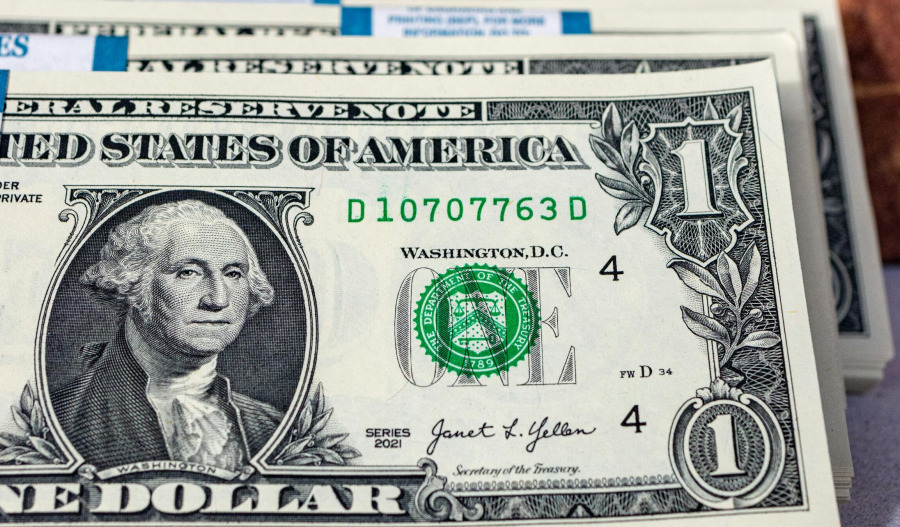The United States dollar index (DXY) started the week steady at 98.536 after closing out last week with a marginal 0.3% decline, as traders reacted to easing trade tensions between Washington and Beijing and weighed signals of further monetary easing from the Federal Reserve.
Markets were rattled early in the week when President Donald Trump reaffirmed that the United States was already “in a trade war” with China, intensifying uncertainty.
Tensions escalated further after Treasury Secretary Scott Bessent referred to China’s trade negotiator as an “unhinged wolf”, exacerbating diplomatic friction.
However, sentiment improved later in the week as Trump softened his stance, saying high tariffs on Chinese goods were “not sustainable” and confirming plans to meet President Xi Jinping at the upcoming APEC Summit in South Korea.
On the monetary front, several Fed policymakers - including Christopher Waller, Stephen Miran, and Alberto Musalem - endorsed further easing, reinforcing expectations of two additional rate cuts before year-end.
Markets now fully price in a 25-basis-point cut in October, with a smaller probability of a larger move.
Euro dips as dollar steadies
The EUR/USD currency pair started the week slightly higher at 1.1654, following gains of 0.3% last week.
Risk appetite improved on Friday as Eurozone inflation data for September matched expectations, leaving traders focused on next week’s U.S. consumer price index for direction.
France’s political turbulence eased after Prime Minister Sebastian Lecornu survived two no-confidence votes and delayed pension reforms, but the government’s push to pass a strict year-end budget through parliament could reignite volatility and weigh on the euro.
Meanwhile, U.S. Fed officials struck a cautiously dovish tone, noting that while inflation remains elevated, policy should remain flexible.
Aussie resilient amid trade optimism
The AUD/USD picked up 0.2% in Monday's early deals, following losses of 0.2% last week.
The Aussie remains supported by improved risk sentiment and Australia’s close trade ties with China.
Among data releases, Australia’s labour market showed unexpected softness in September, with employment rising by only 14,900 jobs versus expectations of 25,000, while a higher participation rate pushed unemployment to 4.5% - its highest since November 2001 - prompting markets to sharply increase bets on a November RBA rate cut after earlier guidance highlighting labour market resilience.
JP Morgan analysts noted: "Although monthly labour data can be volatile and the RBA is unlikely to place excessive emphasis on a single month’s figures, the underlying trend in employment growth is clearly moderating.
“This adds complexity to the RBA’s policy decisions, especially with both inflation and unemployment likely to exceed their most recent forecasts.”
Sterling eases from highs, Fed bets dominate
The GBP/USD pair retreated to 1.3415 after touching a weekly high of 1.3471, as the Dollar regained ground.
Trump’s comments about achieving a “fair deal” with China calmed markets, while ongoing uncertainty from the U.S. government shutdown and credit concerns in regional banks limited Sterling’s advance.
UK data showed monthly GDP growth of 0.1% in August, following a contraction in July, but weaker wage growth raised expectations for a Bank of England (BoE) rate cut by early 2026.
Traders now assign a 44% chance of a December cut, with cumulative easing of roughly 53 basis points priced in by the end of 2026.
Yen weakens as risk sentiment improves
The USD/JPY pair strengthened to 150.38, rebounding from a two-week low near 149.38 as investors unwound defensive positions.
Trump’s softer rhetoric on China boosted dollar demand, while expectations of back-to-back Fed cuts limited upward pressure on yields.
In Japan, BoJ Governor Kazuo Ueda reiterated that policymakers remain data-dependent, with no preset course on future action.
Meanwhile, markets expect Japan’s core inflation re-accelerated to 2.9% year-on-year in September, reinforcing expectations that the Bank of Japan will maintain a cautious stance for now.
Economic Calendar Week Ahead
On Monday, China publishes GDP, retail sales, industrial production, and unemployment figures, providing insight into the world’s second-largest economy amid trade uncertainty. Canada reports PPI, while the Eurozone releases its current account balance.
Tuesday brings U.S. CB Leading Index data, Canada’s CPI, and RBA Governor Jones’s speech in Australia, along with New Zealand’s trade balance.
On Wednesday, markets will watch UK CPI inflation, Japan’s trade data, and Fed Governor Waller’s remarks, while South Korea issues its PPI.
Thursday features Australia’s RBA Bulletin, the Bank of Korea’s rate decision, and U.S. jobless claims, followed by Canada’s retail sales.
The week concludes on Friday with a flurry of PMI releases: the Eurozone, UK, U.S., Japan, and Australia will all issue flash readings.
The U.S. will also publish existing home sales, CPI, and the Fed’s balance sheet, while UK retail sales and GfK consumer confidence will gauge British momentum heading into November.



